Inside Tiffany & Co.'s sparkling Blue Book
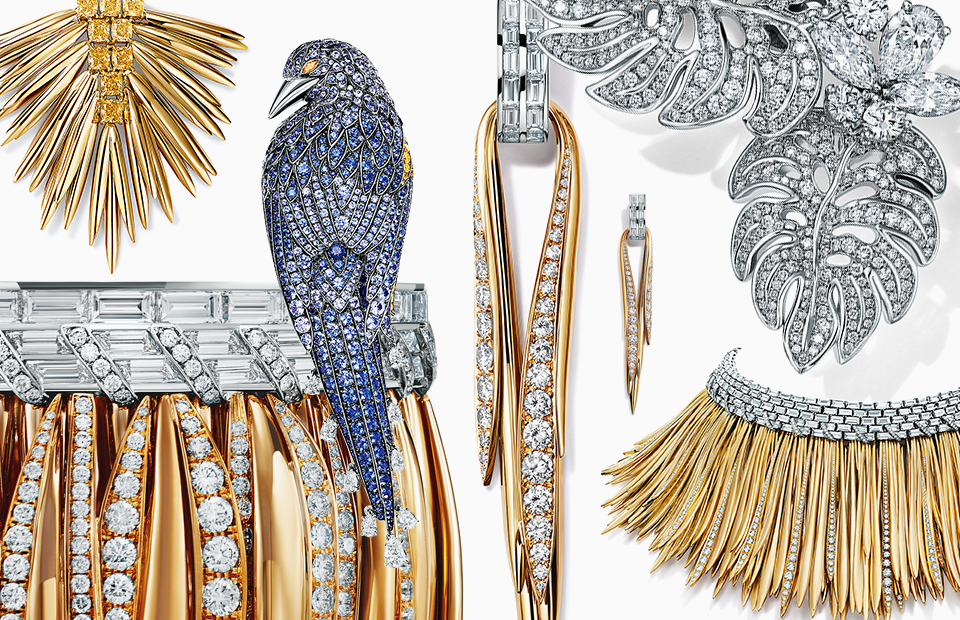
Tiffany & Co. Shows in New York a new Blue Book. The company's chief gemologist and vice-president of High Jewelery Melvyn Kirtley, reveals the details.
The debut Blue Book of Tiffany & Co. Released in 1845, just eight years after the foundation of the company itself. There was initially no poetry - it really was an annual catalog presented in a blue cover with new unique ornaments inside. And not only decorations: each book reflected the fashion of its era: it was possible to meet here a fan of silver with mother of pearl (1845), and a precious theatrical binoculars (1890), and a bicycle made of sterling silver (1894). All the famous designers of the American house noted their chapter in the Blue Book: Donald Claflin, Paloma Picasso, Jean Michel Schlumberger, and Elsa Peretti ... The last two chapters of the "book" (already long ago turned from a catalog into a virtual "edition" of precious Works - in 2015 and 2016 - wrote the then director of Tiffany & Co. By the design director Francesca Amfitheatrof, they were called The Art of The Sea and The Art of Transformation. Further, the transformation took place in the company itself: Amfitheatrof finished her work at the jewelry house, and on February 1 of this year Reed Krakoff joined the creative director of the company.
In the new Blue Book, which is now presented, there are a lot from Francesca (and the collection became her swan song on the post of artistic director of Tiffany & Co.), but most importantly, it still mostly comes from Tiffany & Co. After all, no matter how any designer reinterprets the heritage of the company, over the years the jewelry house has preserved its unique and recognizable style, even though the book was always written in different manner.
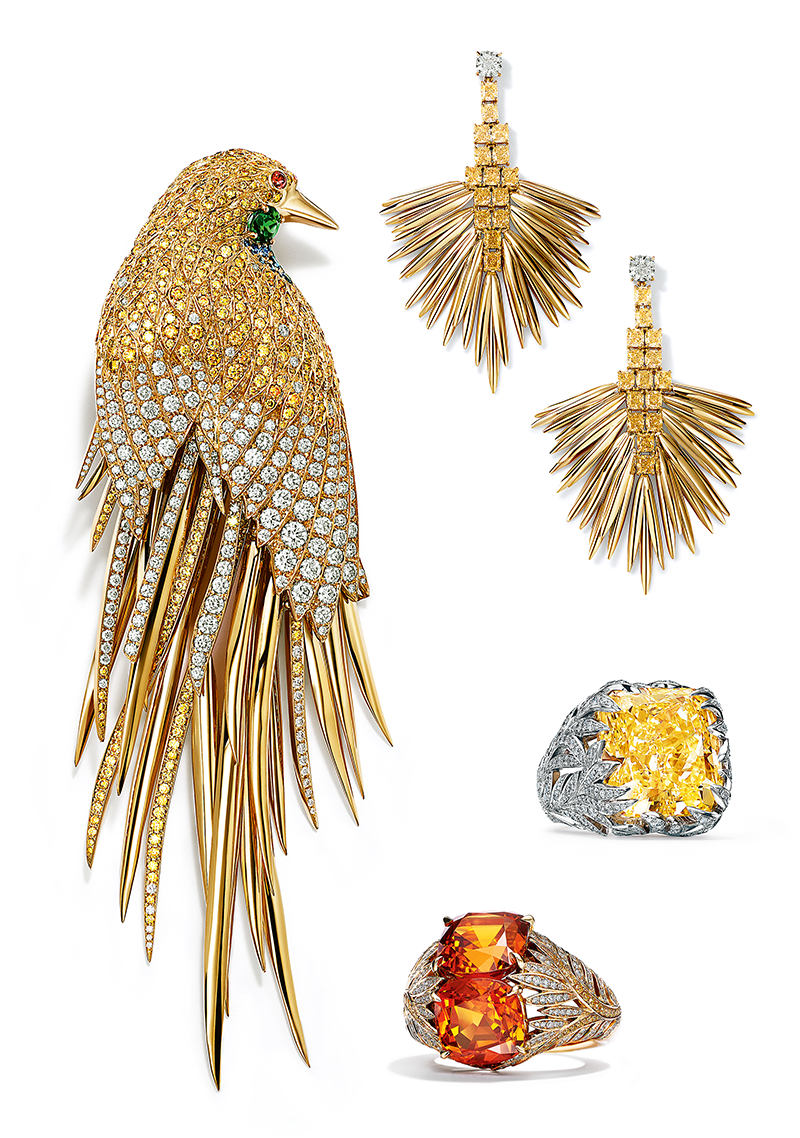
Among the new features of the Blue Book - cocktail rings with a central stone, framed by a complex vegetative motif © PRESS-SERVICE TIFFANY & CO.
The publication of 2017 The Art of the Wild ("Art of the Element") was divided into six parts: Whispers of the Rain Forest, Miracle Berry, The Falls, Leaves of the Sun, Feathered Cloak and the seemingly most diffuse and all-encompassing, but in fact referring to the second name of the tropical flower of the New World of Brunfelsia - Yesterday, Today and Tomorrow ("Yesterday, Today, Tomorrow"). And although each chapter has its own themes and symbols - twisted leaves in Whispers of the Rain Forest, bright colors and cabochons of exotic berries in Miracle Berry, asymmetry and cascades in The Falls - division is still rather conventional, all the chapters of the collection are mixed like wild forest. One of the most spectacular objects - something reminiscent of the aesthetics of tribal ornaments or even traditional skirts of American tribes, a three-dimensional necklace made of platinum with diamonds and a lot of gold leaf-pendants. There are also wide rigid bracelets, and large cocktail rings.
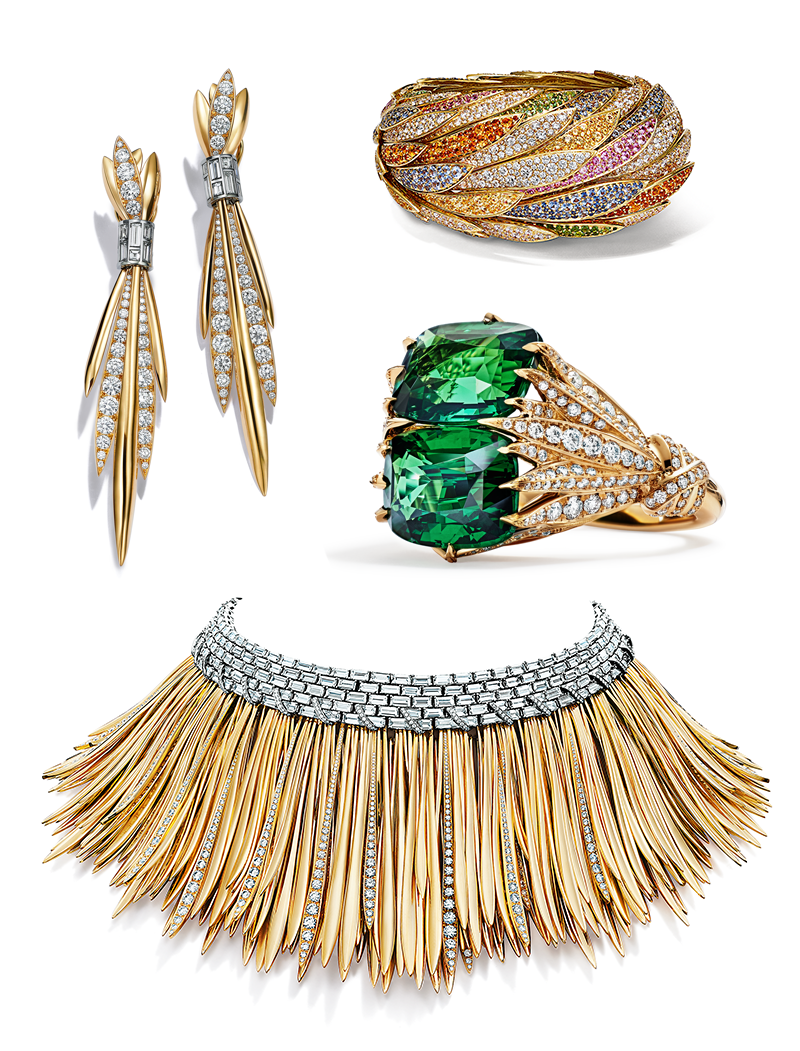
And everywhere - rare stones. As the chief gemologist Tiffany & Co. tells. And Vice President for High Jewelry Melvyn Kirtley: "We are looking for the perfect diamonds and colored gems around the world ... We are not just looking for some new or interesting stones, we always strive to find the best from the existing." Among the results of the aspirations is a 54-carat rubellite in a bracelet from the part Yesterday, Today and Tomorrow, amazingly yellow diamonds in Whispers of the Rain Forest earrings, magnificent pearls of the southern seas.... Of gemmological rarities, elbaite, a valuable species of tourmaline. It is distinguished by its multicolor with transitions from green to red, pink, blue (there are fewer transitions of other shades). 13-carat elbait became the center of the ring from the part of Feathered Cloak, another elbaite decorated a brooch-bird from the same part of the collection. These beautiful exotic birds - rare representatives of fauna in the collection. They, as well as butterflies and dragonflies can be seen on the jewelry watches presented with ornaments. Tiffany & Co. seems to be seriously digging into the theme of wildlife and was absolutely in its element.
On the eve of the premiere of the new Blue Book, the main gemologist Tiffany & Co. And vice-president of High Jewelery, Melvyn Kirtley reveals the details.
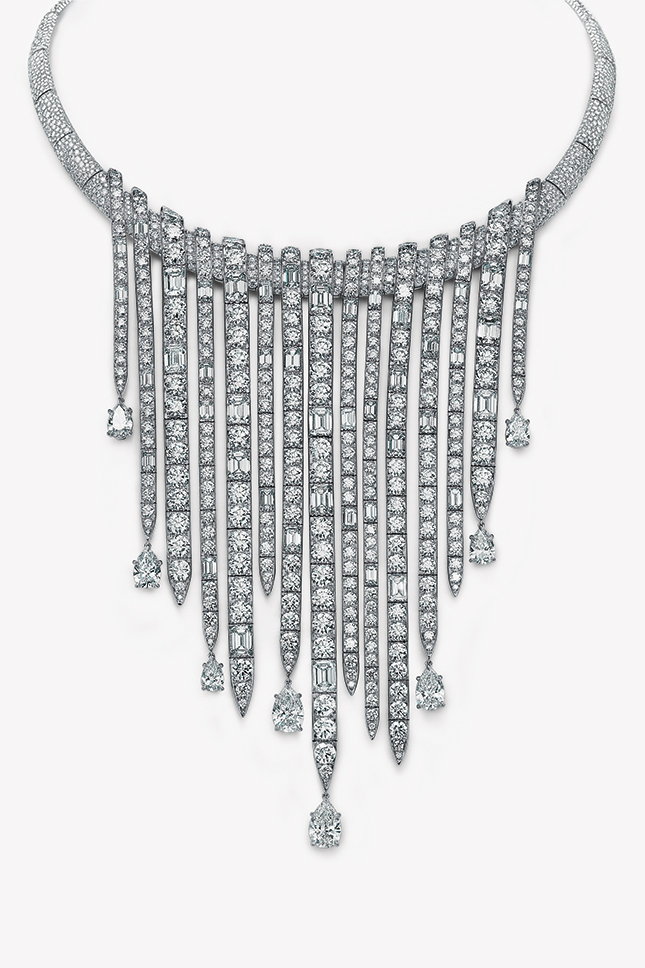
- When and how did the work on the new collection begin?
"A little over a year ago." For us, the normal cycle of creating the Blue Book collection is from one year to 18 months. It starts with finding interesting stones, of course, we work in close contact with the team of designers. Jewelry is created in different ways: at first we find an interesting stone, and then designers come up with a design for them, while we are looking for other stones under the sketch already done by designers. We look at thousands of stones to find the only suitable one.

- How many ornaments in the new The Art of The Wild was created around the stones?
- Several. For example, the 26-carat rich yellow (fancy vivid yellow) "pillow-cut" diamond was used in rings with the leaves of the palm. Or Ceylon 51-carat unheated blue sapphire - it was also made the central element of the ring and surrounded by a diamond pave. Usually such large rare stones are set in a necklace, but we decided that this should be a ring - the person who buys it should always see him on his own, admire the beauty.
- All these stones you were looking for specifically for the collection or, as is the case with many jewelry houses, some lay in the safe and waited for their time - a suitable idea, a suitable design?
- All have been found for The Art of The Wild, and it's a common practice for us.
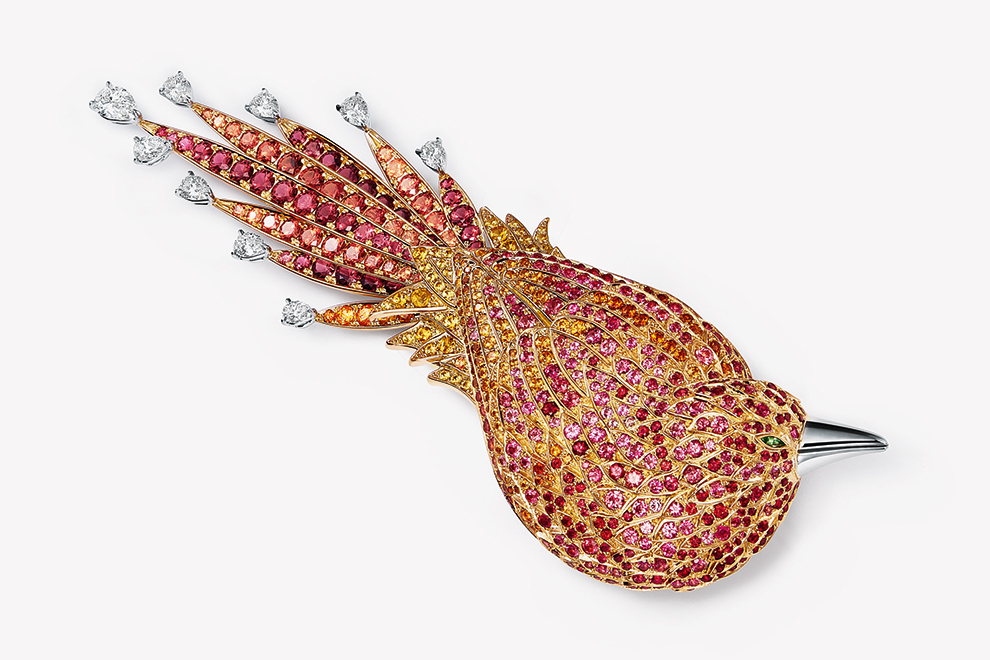
- What is the main difference of approach to the choice of stones of Tiffany & Co. in comparison with other jewelry houses?
"We have more strict selection!" We are always looking for the best from the existing ones, while others - and, especially, colored gemstones - often make compromises. For example, they can use stones with inclusions that are completely unacceptable for us. In addition, all the stones in our country are undergoing a lot of laboratory tests, not all of them are examined so thoroughly.
- For years of your work in Tiffany & Co. What kind of stones would you single out as the most incredible ones - those that you saw?
- Of course, there are a lot of them! And it's very difficult to choose - but still I'll try. First I remember a green and blue diamond, it was straight Tiffany! We gave him the name Tiffany Anniversary Blue. And installed in a very concise design ring.

- You started working at Tiffany & Co., were engaged in sales, and then became a gemologist, right?
- Yes! I became a gemologist just because I started working for Tiffany & Co. I was fascinated by the precious stones! Well, I decided to go to study at the GIA (Gemological Institute of America).
- What are your favorite jewels in the new collection?
"The ring with the sapphire, of which I have already spoken, and besides - the brooch-birds, they are amazing. They have a character, and the quality of performance is simply incredible. For me it's not just brooches, but miniature sculptures. I would like to have one - I would not wear it, of course, I would put it on the pillow on the table next to the bed and admire it.
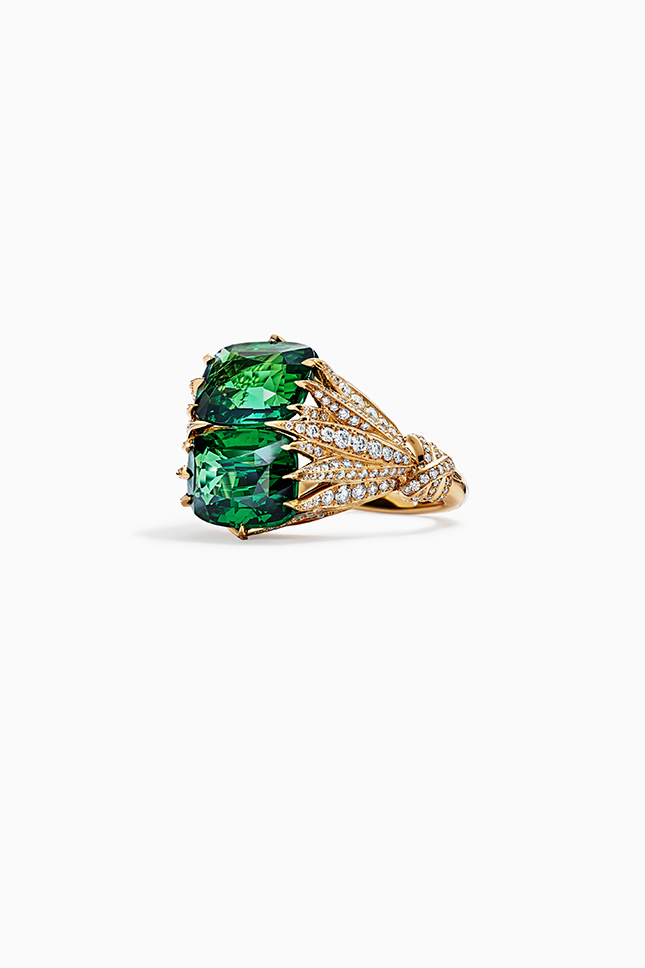
Blue Book Tiffany & Co. 2017 © PRESS-SERVICE TIFFANY & CO.
- Do you buy a lot of rough stones and do you redecorate a lot for decoration?
- We buy uncutdiamonds and work on them ourselves, and cut colored precious stones.
- You are an Englishman, what was it like moving to New York for work?" Did you feel yourself here, as in the song "Englishman in New York"?
- I felt! But in London I feel myself now, like New Yorker. For me, moving to the US and starting work at Tiffany & Co. have become a very special experience, I do not regret my choice at all! Very few companies in the world offer both fashionable jewelry for a few hundred dollars, and high jewelry for millions. Tiffany & Co. is truly unique.
